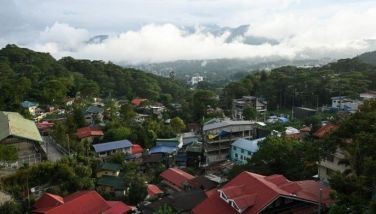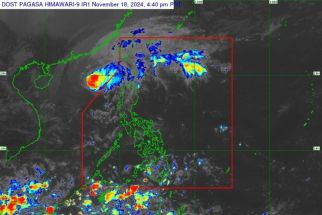NGO scores distorted facts on tourist arrivals
May 25, 2002 | 12:00am
A non-governmental organization (NGO) has accused a lobby group for foreign airlines of distorting the facts and misleading the people in connection with the number of tourist arrivals to the country from Singapore and Korea.
The Save Our Skies (SOS) movement, a nationwide group of travel and tour operators, freight forwarders and other tourism-related businesses, said the Freedom to Fly Coalition (FFC) had distorted figures to back up its claim that passenger arrivals from Singapore and Korea have increased as a result of the recently signed air agreements between the Philippines and the two countries.
"The FFC is twisting the truth in order to justify its support for the RP-Singapore and RP-Korea air agreements. The FFC is only showing its obvious bias for foreign airliners, to the detriment of the local aviation sector and tourism-related industries," the SOS said.
The FFC claimed in a press statement that "arrivals from Singapore in January this year were up 83 percent from a year-ago figure. Arrivals from Korea grew 31.5 percent in 2000 and 18.86 percent in 2001 when the Abu Sayyaf and Sept. 11 terrorism crises were thought to have scared tourists from coming."
The FFC added that "raising seat capacity entitlements, as provided under the new accords, was the way to go since Korea and Singapore carriers had been hitting the ceiling on their entitlements under existing bilateral deals."
But the SOS pointed out that what the FFC cited were figures that included not only tourists but also returning Filipino overseas contract workers (OCWs) and businessmen.
"They (FFC) were able to cite a high arrival figure because they included even the Filipino OCWs and businessmen. As a matter of fact, data from the Department of Tourism showed that tourist arrivals from Singapore have actually declined," SOS said. It said that $1 million was spent to promote the tour, yet this did not translate into increased tourist traffic.
SOS emphasized that "what we have been saying is that increasing seat capacity entitlements and flight frequencies of foreign carriers will not bring in the tourists as long as we do not address such factors as peace and order, security, tourism infrastructure, traffic and accessibility."
On the contrary, increasing indiscriminately and without actual market demand the seat entitlements of foreign carriers will not be in the country’s interest and would be detrimental to the local aviation industry and the tourism sector.
The SOS criticized the Nov. 20, 2001 RP-Korea agreement because even though the Korean and Philippine carriers were granted four additional flight frequencies, the former (Korean Airlines) would be using bigger aircraft, enabling them to carry more passengers than RP carriers.
In the Aug. 25, 2001 RP-Singapore agreement, the Philippine government agreed to hike the seat entitlements of the two countries’ airliners despite the excess seat capacity and lack of demand on the route. Passenger volume on the route reached only 158,784 in 2000 yet the new agreement brought to 835,200 the seats available per year.
The SOS stressed that additional seats help spur a market only when there is a shortage of seat capacity. In the case of the Singapore route, there is excess seat capacity.
The Save Our Skies (SOS) movement, a nationwide group of travel and tour operators, freight forwarders and other tourism-related businesses, said the Freedom to Fly Coalition (FFC) had distorted figures to back up its claim that passenger arrivals from Singapore and Korea have increased as a result of the recently signed air agreements between the Philippines and the two countries.
"The FFC is twisting the truth in order to justify its support for the RP-Singapore and RP-Korea air agreements. The FFC is only showing its obvious bias for foreign airliners, to the detriment of the local aviation sector and tourism-related industries," the SOS said.
The FFC claimed in a press statement that "arrivals from Singapore in January this year were up 83 percent from a year-ago figure. Arrivals from Korea grew 31.5 percent in 2000 and 18.86 percent in 2001 when the Abu Sayyaf and Sept. 11 terrorism crises were thought to have scared tourists from coming."
The FFC added that "raising seat capacity entitlements, as provided under the new accords, was the way to go since Korea and Singapore carriers had been hitting the ceiling on their entitlements under existing bilateral deals."
But the SOS pointed out that what the FFC cited were figures that included not only tourists but also returning Filipino overseas contract workers (OCWs) and businessmen.
"They (FFC) were able to cite a high arrival figure because they included even the Filipino OCWs and businessmen. As a matter of fact, data from the Department of Tourism showed that tourist arrivals from Singapore have actually declined," SOS said. It said that $1 million was spent to promote the tour, yet this did not translate into increased tourist traffic.
SOS emphasized that "what we have been saying is that increasing seat capacity entitlements and flight frequencies of foreign carriers will not bring in the tourists as long as we do not address such factors as peace and order, security, tourism infrastructure, traffic and accessibility."
On the contrary, increasing indiscriminately and without actual market demand the seat entitlements of foreign carriers will not be in the country’s interest and would be detrimental to the local aviation industry and the tourism sector.
The SOS criticized the Nov. 20, 2001 RP-Korea agreement because even though the Korean and Philippine carriers were granted four additional flight frequencies, the former (Korean Airlines) would be using bigger aircraft, enabling them to carry more passengers than RP carriers.
In the Aug. 25, 2001 RP-Singapore agreement, the Philippine government agreed to hike the seat entitlements of the two countries’ airliners despite the excess seat capacity and lack of demand on the route. Passenger volume on the route reached only 158,784 in 2000 yet the new agreement brought to 835,200 the seats available per year.
The SOS stressed that additional seats help spur a market only when there is a shortage of seat capacity. In the case of the Singapore route, there is excess seat capacity.
BrandSpace Articles
<
>
- Latest
- Trending
Trending
Latest
Trending
Latest
Recommended































